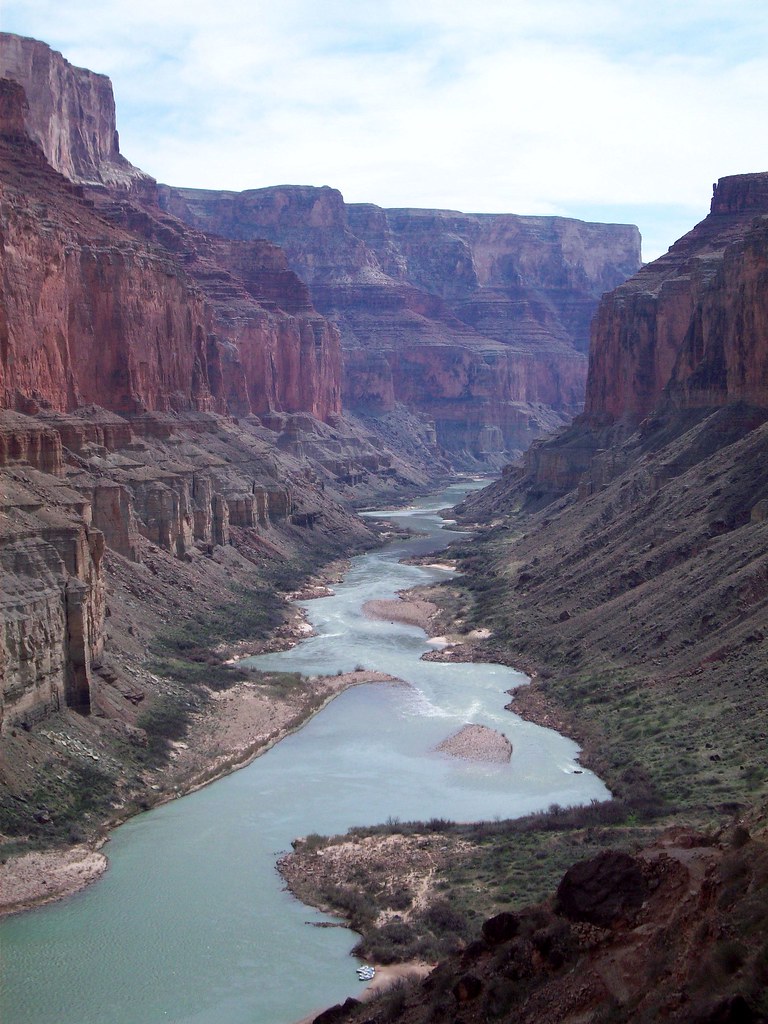By Kylie McNamara.
This spring, I am participating in ASU Law’s Washington, DC program. During my time in DC, I had the opportunity to meet Michael Regan, Administrator of the Environmental Protection Agency (“EPA”), and hear him speak on different topics, including the new Bipartisan Infrastructure Bill. On November 15, 2021, President Biden signed this bill into law as the Infrastructure Investment and Jobs Act. Arizona Senators Kyrsten Sinema and Mark Kelly played key roles in shaping the law, with Senator Sinema serving as a co-author. As an ASU Law student, I naturally wondered how this law impacts Arizona. Specifically, I was interested in what the Act means for the future of Arizona water.
Infrastructure Investment and Jobs Act – A High-Level Overview
This Act, described as a “bipartisan victory,” aims to improve infrastructure by delivering money to U.S. communities over a period of several years. The Act addresses an array of issues, such as improving broadband and high-speed internet access, replacing lead drinking pipes, clearing backlogs at U.S. ports, and upgrading essential pieces of infrastructure. Updated infrastructure will include roads, bridges, public transportation systems, airports, and power lines. For instance, the Act will support the rebuilding of roads and bridges in a way that enhances climate change mitigation, equity, safety, and resilience. It will also provide for the creation of a network of EV chargers to offer convenient charging options for long-distance travel. The Act also aims to prepare infrastructure for the impacts of possible cyber-attacks and severe weather events.
The Infrastructure Investment and Jobs Act is thought to be the “strongest investment” in ensuring clean drinking water and wastewater infrastructure in our country’s history. Millions of American families are set to benefit from the Act’s focus on clean water, and more than $8 billion will go toward water infrastructure throughout the Western U.S. Arizonans are certainly familiar with issues that this money will address, like water storage and recycling issues, drought contingency plans, and dam safety. It is thought that over time, the Act will also help encourage economic growth.
The Act’s Impact on Arizona Water
The Infrastructure Investment and Jobs Act will help Arizona in multiple ways. Perhaps most notable will be its impact on water. On December 2, 2021, less than a month after the Act was signed into law, the EPA announced that more than $109 million will be put toward water infrastructure funding in Arizona, with a focus on prioritizing small, rural, and disadvantaged communities. This quick allocation of money signals that the EPA recognizes Arizona’s unique water and wastewater challenges, like severe droughts, emerging water contaminants, and wildfire threats to watersheds. Ideally, the $109 million will enable these underserved communities to address problems in innovative, resourceful ways.
On January 21, 2022, Senator Mark Kelly’s office issued another statement concerning the Act and its impact on Arizona. It announced that in 2022, $82.8 million will be invested in thirteen different water and environmental infrastructure projects within the state. One such project is a water authority sponsored by U.S. Representative Greg Stanton. This authority works to improve water accessibility and cleanliness for Indigenous and rural communities. The authority will receive $18.5 million of the $82.8 million. This $18.5 million will be used to help create water pipelines, wastewater treatment capabilities, flood detention, and filtration treatments for communities around the state, including Maricopa County, the Pascua Yaqui Tribe, Pima County, the Yavapai-Apache Nation, and certain Northern Arizona neighborhoods that lack flood mitigation structures.
Arizona is growing, and it is critical to address the historic drought that the state is facing. According to Senator Sinema’s office, more than $50.5 million will be invested in Arizona’s drought relief measures this year. Senator Kelly said that this law will assist Arizona in taking “meaningful steps towards securing a sustainable water future by upgrading not just our dams, canals, and reservoirs, but also water management and conservation strategies for decades to come.” It is important to note that additional funding opportunities exist through the Act, and more opportunities may develop. For instance, it was recently announced that the EPA gave Arizona schools $320,000 to buy cleaner school buses, which will ultimately protect children’s health and the health of neighborhoods around schools and their bus routes.
Conclusion
As Senator Sinema said, “Arizona jobs, economic opportunities, and the health of our communities all depend on clean and sustainable water.” Environmental concerns are not new to our state, but the longer they go unaddressed, the worse conditions will become. When I met Administrator Regan, he was excited about the Infrastructure Investment and Jobs Act and the promising support that it offers. Upon taking a closer look at the Act’s impact on Arizona communities, it is easy to understand his optimism. The opportunities available through this Act will assist in achieving a healthier, cleaner, and safer Arizona.
Please Note: Circumstances discussed will continue to evolve after the publication of this post.

